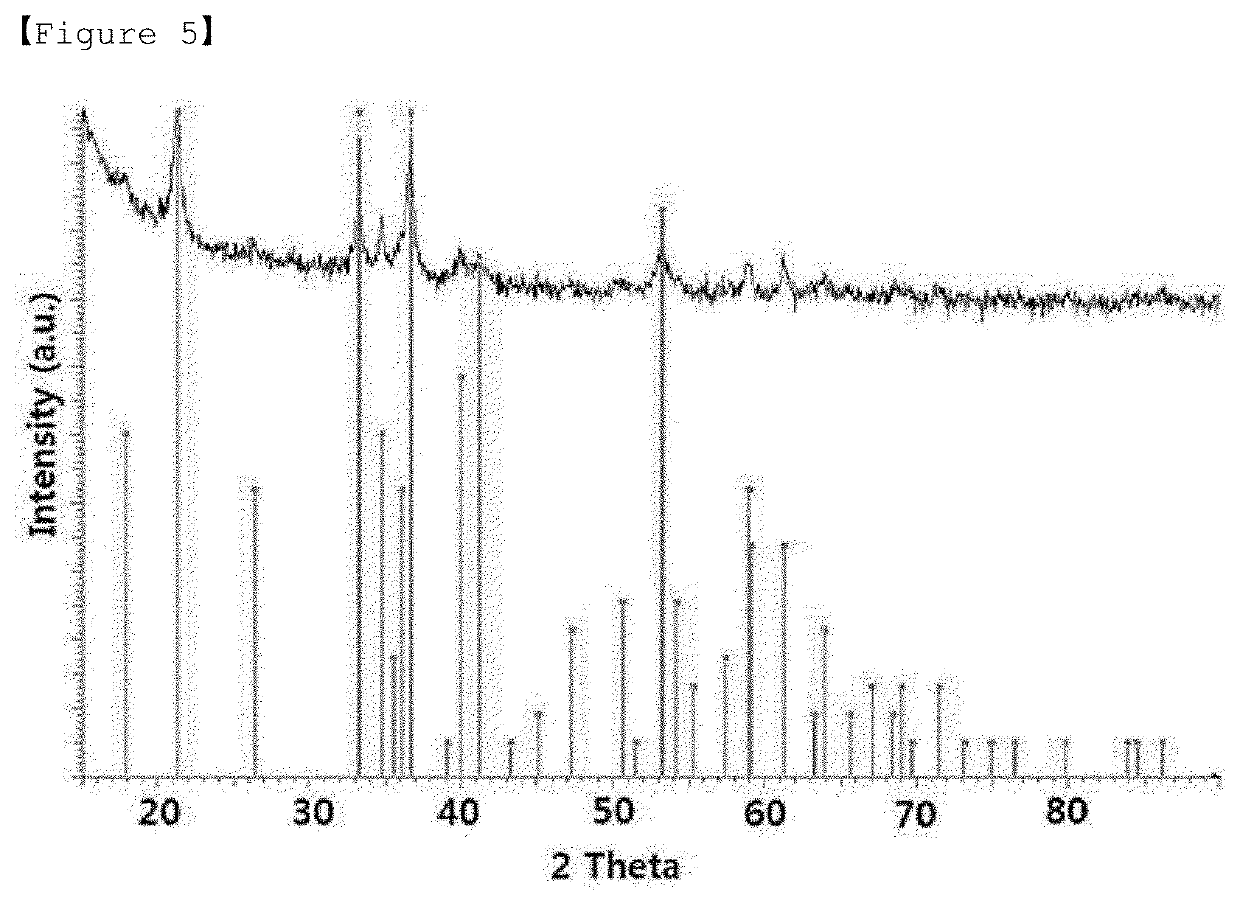Positive electrode comprising goethite for lithium secondary battery and lithium secondary battery comprising same
a technology of lithium secondary battery and positive electrode, which is applied in the direction of cell components, final product manufacturing, sustainable manufacturing/processing, etc., can solve the problems of limited range that can be driven after a single charge, and limited capacity of lithium ion secondary battery, so as to achieve high capacity, suppress side reactions with the electrolyte, and increase the positive electrode effect of lithium secondary battery
- Summary
- Abstract
- Description
- Claims
- Application Information
AI Technical Summary
Benefits of technology
Problems solved by technology
Method used
Image
Examples
preparation example 2
Preparation of Goethite having Rod Shape
[0108]0.05 M of Fe(NO3)3.9H2O (Aldrich company, purity of 98% or more) was mixed with 0.3 M N2H4.H2O (Aldrich company, purity of 98% or more) for 50 seconds. Thereafter, the mixed solution was stirred at 80° C. at 400 rpm for 2 hours. Thereafter, the resultant was filtered through filter paper, and then allowed sufficient air to be introduced and dried at 80° C. for 8 hours to obtain goethite (α-FeOOH) having rod shape.
preparation example 3
Preparation of Lepidocrocite
[0109]0.3 M NaBH4 (TCL company, purity>95%) was mixed with 0.05 M Fe(NO3)3.9H2O (product from Aldrich company, purity of 98% or more) for 50 seconds. Thereafter, the mixed solution was stirred for 40 minutes at 400 rpm at room temperature of 25° C., and it was confirmed that hydrogen gas was generated during the reaction. Thereafter, the resultant was filtered through filter paper, and then allowed sufficient air to be introduced and dried at 80° C. for 8 hours to obtain lepidocrocite (γ-FeOOH).
example 1
Manufacturing of Lithium Secondary Battery Comprising Positive Electrode with Containing Goethite having Urchin Shape
[0110]First, 10 parts by weight of goethite relative to the total weight (100 parts by weight) of the base solids (an active material, an electrically conductive material, and a binder) into which the goethite prepared in Preparation Example 1 will be added was dissolved in water as a solvent. Subsequently, with respect to the obtained solution, a total of 100 parts by weight of base solids, that is, 88 parts by weight of sulfur-carbon composite (S / C of 7:3) as an active material, 5 parts by weight of Denka black as an electrically conductive material, and 7 parts by weight of styrene butadiene rubber / carboxymethyl cellulose (SBR / CMC of 7:3) as a binder were added and mixed to prepare a slurry composition for a positive electrode.
[0111]Subsequently, the prepared slurry composition was coated on a current collector (Al Foil) and dried at 50° C. for 12 hours to prepare ...
PUM
| Property | Measurement | Unit |
|---|---|---|
| diameter | aaaaa | aaaaa |
| length | aaaaa | aaaaa |
| particle diameter | aaaaa | aaaaa |
Abstract
Description
Claims
Application Information
 Login to View More
Login to View More - R&D
- Intellectual Property
- Life Sciences
- Materials
- Tech Scout
- Unparalleled Data Quality
- Higher Quality Content
- 60% Fewer Hallucinations
Browse by: Latest US Patents, China's latest patents, Technical Efficacy Thesaurus, Application Domain, Technology Topic, Popular Technical Reports.
© 2025 PatSnap. All rights reserved.Legal|Privacy policy|Modern Slavery Act Transparency Statement|Sitemap|About US| Contact US: help@patsnap.com



